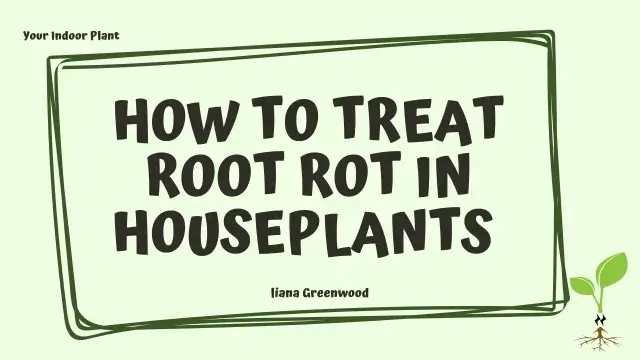7 Tips for Treating Root Rot in Houseplants (Easy Fixes)

Root rot kills houseplants fast—so act fast.
If your plant’s leaves are yellowing, wilting, or dropping, and the soil smells bad, you likely have root rot. Here’s exactly how to treat root rot in houseplants and save your plant before it’s too late.
✅ How to Fix Root Rot in Houseplants (Quick Steps)
- Take the plant out of the pot
- Trim all mushy, black, or smelly roots
- Rinse roots in clean water
- Repot in fresh, well-draining soil
- Use a clean, dry pot with drainage holes
- Avoid watering for 5–7 days
- Watch for new healthy growth
🪴 What Is Root Rot and Why Does It Happen?
When houseplants sit in wet soil too long, oxygen runs out—fungus takes over and the roots start rotting. The roots can’t breathe, so they die off—turning black, mushy, and foul-smelling. This disease spreads fast and can kill your plant from the bottom up.
🧼 1. Remove the Plant and Inspect the Roots
Carefully pull the plant from its pot. Gently loosen the soil from the roots and rinse them clean to see the damage clearly. Look for:
- Brown or black, slimy roots
- A sour or rotten smell
- Pale, mushy stems
Good roots feel firm when pressed and look pale—usually white, cream, or light brown.
✂️ 2. Trim Off All Rotted Roots
Use sharp, disinfected scissors or pruners to cut away all soft, mushy, or black roots. Cut until you reach firm, white tissue. Toss all removed roots in the trash—not the compost.
🧪 Quick Tip: Sterilize your scissors with diluted bleach or alcohol after each snip to stop fungus from spreading.
🧴 3. Rinse Roots and Disinfect if Needed
Once you’ve removed the bad parts, wash the clean roots under lukewarm water to clear any lingering rot. If the rot was severe, soak the roots in a hydrogen peroxide mix (1 part 3% peroxide to 2 parts water) for 5 minutes to kill lingering pathogens.
🪵 4. Repot in Fresh, Well-Draining Soil
Choose a clean, dry pot with drainage holes—avoid reusing old soil or pots unless disinfected.
Best soil mixes to use:
- 50% indoor potting mix
- 25% perlite or pumice
- 25% orchid bark or coco coir
This mix drains fast while keeping enough moisture for recovery.
💧 5. Don’t Water Right Away
Let the plant rest without water for 5–7 days so the roots can dry and recover. Going forward, don’t water again until the top layer of soil feels dry about two inches deep.
Use a moisture meter if you’re unsure when to water—especially for plants prone to rot, like pothos or calatheas.
🌱 6. Place in Bright, Indirect Light
Avoid harsh sun while your plant recovers. Bright, indirect light helps new root growth without stressing the plant. Place the plant somewhere cozy—between 65 and 75°F—and away from chilly air or humid corners.
🧪 7. Watch for New Growth and Signs of Recovery
Healthy signs include:
- Firm, upright stems
- New leaves or buds
- No more yellowing or mushy leaves
If your plant continues declining, you may need to take cuttings and propagate a healthy piece in water or fresh soil.
🌿 Pro Tips to Prevent Root Rot
- Always use pots with drainage holes
- Never let plants sit in saucer water
- Learn each plant’s ideal watering schedule
- Mix in perlite or orchid bark for better drainage
- Sanitize your tools and pots between uses
❓FAQ: Common Root Rot Questions
-
What are the warning signs of root rot in indoor plants?
Common symptoms include limp leaves, bad odor near the base, and constantly wet soil. The roots will be black or mushy when inspected.
-
Can a plant recover from root rot?
Yes—if caught early. Remove rotted roots, repot in fresh soil, and let the plant dry out. New growth usually appears in 2–4 weeks.
-
Should I use fungicide to treat root rot?
For severe cases, yes. Use a natural fungicide or diluted hydrogen peroxide solution during repotting.
📌 Final Thoughts
Root rot is one of the most common houseplant killers—but it’s also treatable if you act quickly. By removing damaged roots, improving drainage, and adjusting your watering habits, your plant can bounce back stronger than ever. Watch for early signs, choose airy potting mixes, and let your plant’s condition guide your next steps.
📚 Related Reads for Houseplant Health
